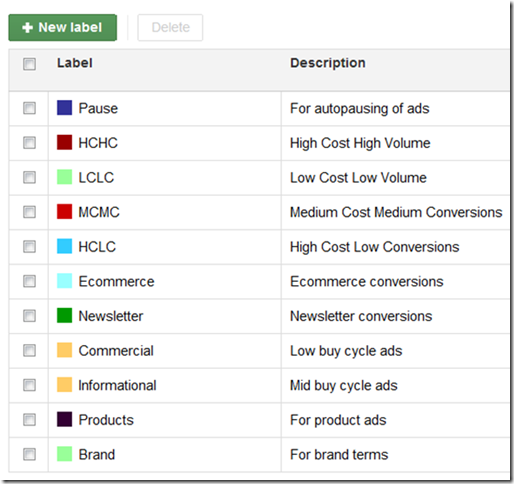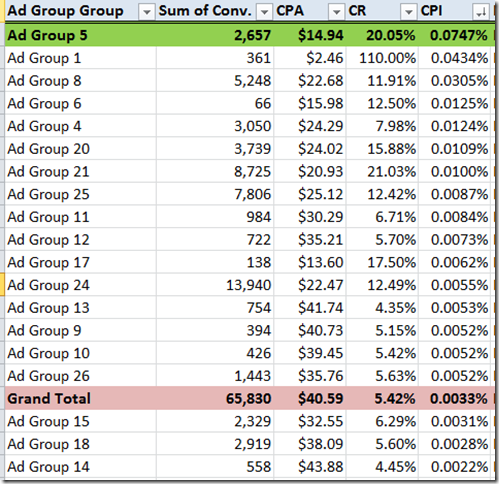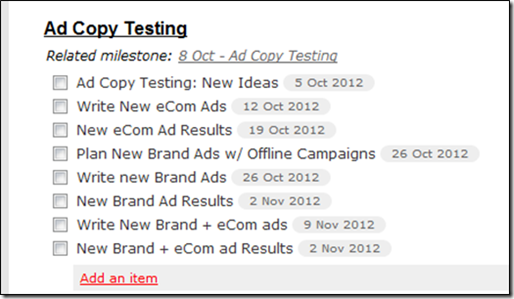How To Easily Manage & Test Millions Of Ads
You must test ads to make your paid search account grow and thrive. That fact is no longer debatable – it is just a best practice fact. Ad testing in small accounts is very easy as there are not thousands of ad group or hundreds of thousands of ads to track. However, in large accounts, […]
 You must test ads to make your paid search account grow and thrive. That fact is no longer debatable – it is just a best practice fact. Ad testing in small accounts is very easy as there are not thousands of ad group or hundreds of thousands of ads to track. However, in large accounts, ad testing is often not done well.
You must test ads to make your paid search account grow and thrive. That fact is no longer debatable – it is just a best practice fact. Ad testing in small accounts is very easy as there are not thousands of ad group or hundreds of thousands of ads to track. However, in large accounts, ad testing is often not done well.
In today’s column, we’ll examine the most common testing techniques and why they are rarely successful, and then address how to test ads across large accounts.
Common Testing Techniques For Large Accounts
One of the most common is to create lots of ads. Turn on ‘optimize for CTR’ or ‘optimize for conversions’ and let Google pick the winners. The problem with this method is that losers are rarely deleted.
Even if Google is optimizing your ads, they will show your losers some of the time. This makes your ad serving sub-optimal as just by deleting losers, you can increase the overall account efficiency several points.
Another common testing method is to only test the head terms or the most expensive terms. This makes it so you are spending time testing where you are spending money, but most of your ad groups never get tested so the majority of your keywords never improve.
Test when you feel like it. This is often a workflow problem and just by creating a testing schedule you can improve your ad testing dramatically.
The vast majority of large accounts do not have an easy method to test all of their ads, and the problem is often identification of what needs to be tested.
The Initial Problem: Identifying Test Parameters
When most accounts are new, they are usually attempting to increase a single conversion type: sales, subscriptions, lead generation, etc. As accounts grow, they often end up with multiple conversion types. Each ad group should be driving users to a single type of conversion type.
However, the actual conversion type may vary between ad groups. Unless you have an easy way to understand the goal of each ad group, you cannot test ads that are focused around the ad group’s end goal.
In addition, not all keywords are created equal. Some keywords are trying to drive engagement at the top of the buying funnel. Other keywords have their success measured by direct conversions. Some keywords will be brand focused, others will have product names, and yet others will be generic or have other qualifiers attached to them.
Therefore, what we need is a system to easily label ads based upon their end goal, keyword types in the ad group, and other parameters of which you wish to test.
AdWords Labels
AdWords labels makes it very easy to identify the purpose of your ads and ad groups once you know their overall purpose. First, make a list of everything you need to know about your ads so that you can test and determine your winners. These labels will be your end testing segments.
Next, for each ad, you will want to label them appropriately.
An ad might have more than one label. You might have some ads that are: brand, newsletter, high funnel; and other ads that are product, e-commerce, non-brand. The labels should make it easy to segment your ads so you can analyze all brand ads, or only brand ads that have an end goal of an e-commerce checkout.
When you consider how you want to read the results and the types of ads you want to compare against each other, the types of labels you will apply becomes easier to think about, create, and manage.
Testing Ads At Scale
Once you have the labels created, then you can use simple pivot tables to analyze the ads. I created a video for a previous column in how to easily test ads across ad groups. While the video was based around analyzing small accounts, the concept of using pivot tables to analyze ads across ad groups also applies to large accounts. You can see the video in this column: Step-by-Step Instructions For Testing Low Volume Ad Copy.
Once you have your labels created and data for the ads, then you can simply analyze how ads are performing for a label type or label combination:
When you use a pivot table to analyze ads, it is best to use very consistent lines within the ads so you can easily analyze them at scale. For this type of ad creation, I’d recommend using a tool such as the Mass Ad Creator. These types of tools allow you to easily create tens of thousands of ads that can be easily analyzed by pivot tables.
When you use a pivot table in this manner, you will want to examine the ads that are doing the best so that you can keep them and delete the losers. In addition, you will also want to examine the data at the ad group level.
By creating a benchmark of ‘average’ (known as Grand Totals in this chart – the total of all conversions, but the average conversion rate, CPA, and CPI across these ads), you can see the ad groups that are below the account average for a label so you can address the ad testing in those ad groups individually.
Create A Testing Schedule
Since you might have tens of thousands or even millions of ads, you can’t just test ads once a month. You need to create a testing schedule based upon your labels. You can do this in a calendar or project management system.
By creating a testing schedule based upon your labels, you can make sure that you are testing all the types of goals and keywords throughout your account.
Conclusion
Ad testing is fairly easy in small accounts. With mid-sized accounts it can start to get complex, and with large accounts it can become very difficult unless you have a process in place to test, measure, and refine your ads.
By using AdWords labels, pivot tables, and a testing schedule ad testing can be simple even for massive accounts. It does take some organization and discipline to to use this methodology well. However, once you start to regularly test all the ads in your account – your paid search accounts will grow and become much more effective.
Contributing authors are invited to create content for Search Engine Land and are chosen for their expertise and contribution to the search community. Our contributors work under the oversight of the editorial staff and contributions are checked for quality and relevance to our readers. The opinions they express are their own.
Related stories
New on Search Engine Land




